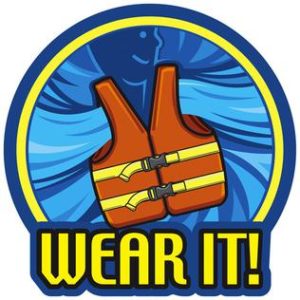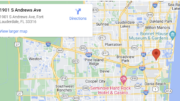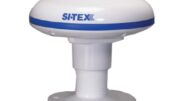Marine fire extinguishers are the topic of today’s post in support of National Safe Boating Week. (This year, the annual event begins on May 16.) Despite being surrounded by water, a boat can catch fire quickly. If captains, crews, and owners don’t act fast, they could be forced to abandon a blazing vessel. This could become a huge problem if you’re far from shore. Putting out the fire early is your best course of action. You can only do that if you have enough of the right fire extinguishers on board and know how to use them. Let’s discuss this…
Boat Fires: the Deadly Truth
Did you know that fire was the fifth-highest cause of boat loss between 2008 and 2012? Those statistics were featured in a piece by BoatUS Magazine. The article also states that from 2009-2013, 32% of all boat fires were caused by faulty electrical wiring. These fires typically happened in the engine compartment, where fuel and an ignition source typically meet. This is just one of the many reasons why boat owners and captains need to be aware of three things:
-
What type of fire extinguisher you need on your boat.
-
How many marine fire extinguishers you should have on your vessel.
-
Where those fire extinguishers should be placed.
Let’s take a deeper look into these important issues for all boats, commercial or personal.
Boat Fire Extinguisher Requirements
The United States Coast Guard (USCG) recommends Class B fire extinguishers for boats with engines and electronics. These devices are rated for extinguishing fires involving flammable liquids such as fuel and oil. There are B-1 and B-II fire extinguishers, and the one you need depends on the size of your boat, according to the USCG. The number of extinguishers you’ll need depends on the vessel’s size:
-
Boats under 26’ in length must have one B-1 marine fire extinguisher.
-
Boats 26’ to less than 40’ feet must have two B-1 or 1 B-11 fire extinguisher. (You only need one B-1 if you have an approved fixed fire extinguisher system.)
-
Boats 40’-65’ require three B-1 or one B-11 and one B-1 fire extinguisher. (If you have a fixed fire suppression system, you’ll need two B-1 or one B-II fire extinguishers.)
The thing about requirements is that they’re often the bare minimum. To be safe, it’s best to have one or two fire extinguishers in areas where fires typically happen. For example, having one on both ends of the engine room is a good idea. If your boat has a kitchen, you should have at least one there too and on deck. Basically, anywhere on the boat where a fire could possibly break out needs at least one easily-accessible fire extinguisher.
How to Place Marine Fire Extinguishers
It’s not enough to have the right fire extinguisher or the right amount. These devices have to be easily accessible during an emergency. Think about it. People tend to panic during emergencies. In that frame of mind, you or your crew might forget that the fire extinguisher is stored in a cupboard or closet. It’s best to secure them in a proper marine fire extinguisher holder or mount in a place you can quickly grab it. Oh, and make sure that you and your crew have the training you need to properly use these devices. That’s paramount!
Safe Boating Week Continues

The event lasts a week, but the habits of being safe on your boat should last a lifetime. Come back over the next few days for more safe boating tips. Speaking of boats, our Signal Connect division specializes in providing satellite TV to commercial and luxury vessels. In addition, Solid Signal carries a huge selection of the latest marine electronics equipment. Whether you own a superyacht or manage a fleet of tugboats, we have what you need. To learn more, call us at 888-233-7563. You can also fill out the form below and send it to us.





